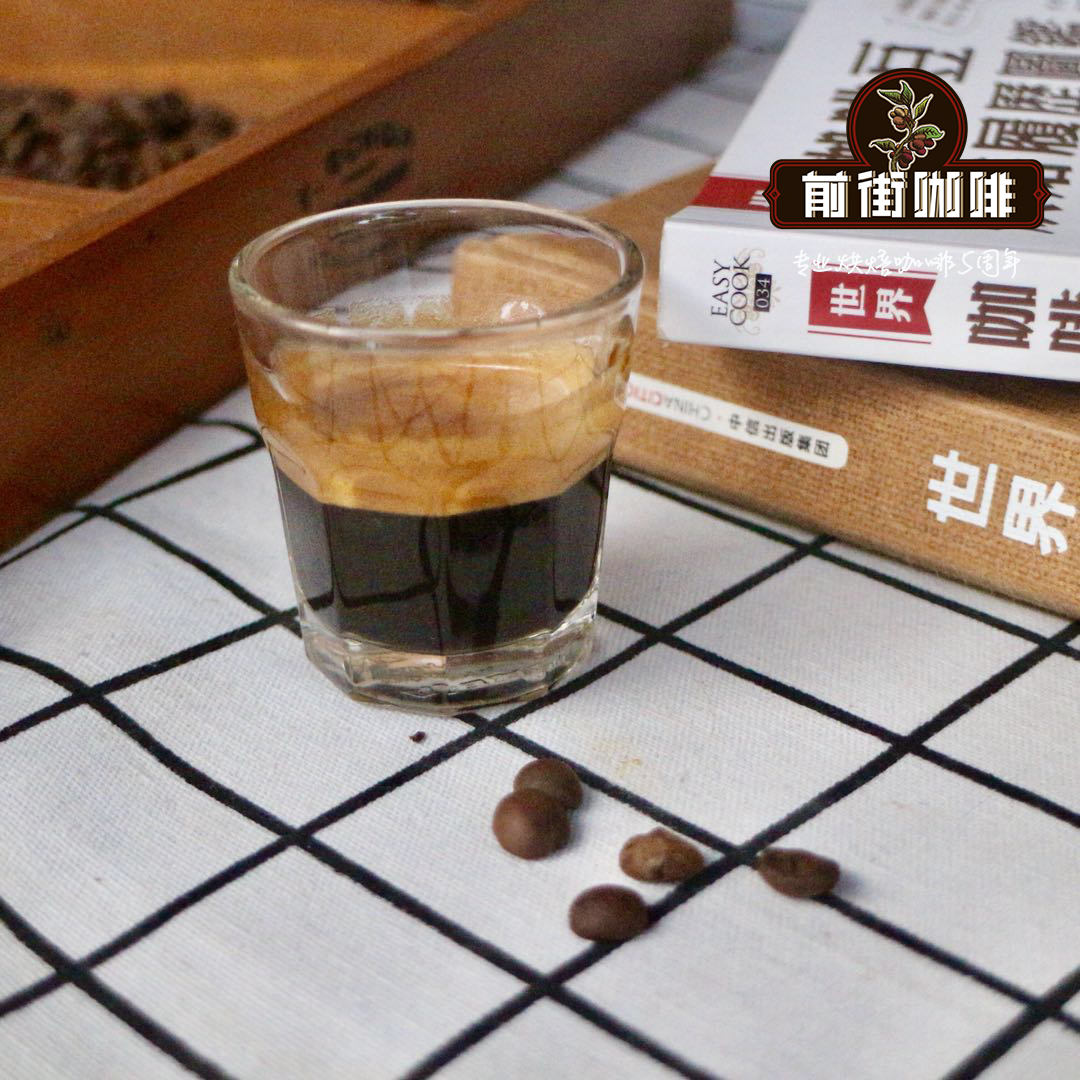Brazil California Manor Information introduction _ Brazil California Manor Coffee Bean brewing sharing

Professional coffee knowledge exchange more coffee bean information please follow the coffee workshop (Wechat official account cafe_style)
Brazilian Coffee Manor Information
The California Manor, which has a history of more than a century, is located in the Bathia tropics of Norte Pioneiro do Paran á, which is adjacent to southern Brazil.
Norte Pioneiro do Paran á is located in the special coffee production area. The region's "coffee belt" on the Tropic of Cancer (Tropic of Capricorn) has a distinctive feature, while its northern neighbors Minas Gerais and S ã oPaulo do not.
The California manor has successfully entered the boutique coffee industry due to the integration of the specialty coffee of the Paran á Northern Pioneer project.
In 1920, an American company called Leon&Israel acquired the land. The professional management adopted by the US government in Brazil earned Brazilian coffee a global reputation among coffee buyers in the 1940s and 1980s.
In the meantime, a film called "Sweet Bread" was filmed on a California farm.
In 2004, the Saldanha Rodrigues family acquired the farm.
As a visionary entrepreneur, Dr. Paul Cesar Saldanha Rodrigues always said
You can always do better.
Initially, because Luiz Rodrigues had no coffee-related experience and knowledge, he leased part of the farm to sugar cane farmers, and all the income was used for the full renovation of the coffee farm. In 2006, he started growing coffee. By 2008, his hard work had created 200ha specially managed plantations of Mondo Novo,Yellow Catuai and Obat ã. At the same time, he also focused on the professional management and sustainable development of coffee production.
Social and environmental sustainability is an important part of farm goals, and today, California Manor has a mission of "producing high-quality food for consumers, society and the environment."
Coffee production
California Manor chose high-quality seeds from IAC (Campinas Agricultural Research Institute) partners.
After two to three years of planting and the first spring rain (August / September), the flowers give off a strange fragrance.
Like magic, white flowers turn into small solid green fruits, which can then develop into red or yellow coffee berries. The harvest season begins in autumn (April / May) and lasts until next spring (August / September) as the first cherries mature.
Maintaining the continuous cultivation of specialty coffee requires a combination of nutrition programs, pest management and soil protection. To this end, the sustainable production system adopted by the California manor covers all measures, turning the coffee plantation into a plantation surrounded by natural and human development.
The production system envisages:
Coffee plantations are an integral part of the eco-social system
-follow good agricultural practices throughout the cycle
-increase in soil organic matter content and decrease in the use of chemical fertilizers, herbicides and pesticides
-improve water consumption throughout the process
-use IRDS (Integrated recommendation and Diagnostic system) to ensure flower insemination and plant nutrition
-use of compounds in nutrition programs
-the increased use of IPMD (integrated pest management) due to the increased use of "natural predators" (organisms such as birds, spiders, which help control diseases and insect pests), thereby reducing the use of pesticides
-use rows of wind shelter trees to reduce the impact of wind on agriculture to help the IPMD program
-use Brachiaria (type of grass) to promote ground cover and prevent erosion throughout the year. This technology has a comprehensive effect with all the other key points mentioned above. The reason is that this technology reduces the use of herbicides, improves the efficiency of water use, and increases the content of organic matter in the soil.
On California farms, harvesting coffee berries is considered to be an extremely important part of the operation that affects the flavor of coffee beans.
Therefore, when carrying out harvesting operations, these procedures will be adopted for employees:
-specific training for employees in harvesting operations (all farm employees receive good hygiene practices and operational training in harvesting every year before the start of coffee harvest)
-place coffee on polypropylene cloth or mechanical harvesting to avoid contact with soil
-use selective harvesting for two or three rounds, manual or mechanized, and harvest as much as 100%
-Transportation, reception and processing (wet grinding) of harvested coffee crops are completed as soon as possible to avoid chemical and biological reactions and reduce product quality
The post-harvest stages of coffee berries are divided into soaking, drying, storage and drying.
All processes are accompanied by a professional team, so each batch of coffee presents a different and specific management because of its particularity, in order to identify and identify the sensory properties inherent in each coffee.
Social and environmental responsibility
The most important asset of California manor is people. Therefore, it is extremely important that employees and their families have access to education, medical support, housing and transportation assistance.
Through cooperation with the Jacarezinho municipal government, it is feasible to provide evening literacy classes and high school education for employees. The social program, called Coffee Kids, has helped the estate's children to go to school since 2007, which is a source of pride and motivation for employees.
The project, which has about 40 members each year, offers daily tutoring courses and additional religious and music courses on Saturdays. In 2011, the choir of St. Francis was founded. Children also learn the concept of civilization and environmental education as "primary agents" to promote the sustainability of daily life as a whole and to participate in local communities.
In recognition of its potential to transform the community, California Manor often welcomes visitors who know its history, technology and production systems. These visitors help spread the concept of truly sustainable agricultural production and create a better world for the present and the future.
The Environmental Management Plan aims to guide farm action and bring it into full compliance with Brazilian environmental legislation. The combination of coordinating the production of high-quality food and protecting the environment reflects ensuring the quality of life for present and future generations. And this is also the manor's commitment to mankind.
Information on coffee beans selected from manors in California, Brazil
Origin: Norte Pioneiro do Paran á, Brazil
Altitude: 1100 m
Bean seed: Obata (a hybrid from Peru and Southeast Asia)
Processing method: washing method
Acidity: low alcohol: medium
Caption: aromas of caramel and chocolate with a nutty finish
Brewing and sharing
This is an extremely compatible Brazilian coffee bean, different practices have a good experience.
1. Six cups of Chemex (ice)
45g powder, wet the filter paper, take out the filter paper, cool the bottom of the filter cup with a small amount of ice, pour out the ice for cooling, put in 380g ice, add the filter paper, pour in the coffee powder, stew with 90g water (the steaming time is 31s at the beginning of water injection), the second water injection to 270g, wait for 30s, the third water injection to 340g, the total time 2min cut off. Shake the Chemex and share it.
Description: slight acidity, obvious sweetness of caramel, long finish of chocolate and nuts.
2.Kalita wave (pastry cup)
20g powder, Ditting6 grade grinding, water-powder ratio 15:1, the first water injection 50g, steaming 15s, the second water injection 250g, the injection method is to draw a circle from the center, and then draw to the center when drawing to the outer circle from the filter paper 3mm.
Caption: mild acidity, caramel sweetness, Body fullness, chocolate, nuts and a lingering finish.
END
Important Notice :
前街咖啡 FrontStreet Coffee has moved to new addredd:
FrontStreet Coffee Address: 315,Donghua East Road,GuangZhou
Tel:020 38364473
- Prev

How much is the Brazilian Santos bourbon coffee beans per jin? what is the best coffee in Brazil?
Professional coffee knowledge exchange more coffee bean information please follow the coffee workshop (Wechat official account cafe_style) Brazilian coffee Santos Brazil Bourbon Santos Arabica coffee in Brazil is called Bourbon, after it appeared on the island of Bourbon (now known as Reunion). Santos Coffee is a smaller and curly bean, derived from
- Next

What is Brazilian pectin sun-cured coffee? What is the difference between pectin sun-cured coffee and ordinary sun-cured coffee beans?
Professional coffee knowledge exchange more coffee bean information please follow the coffee workshop (Wechat official account cafe_style) Brazilian coffee pectin sun drying coffee beans lift the sun, the most widely used is Brazilian coffee; the disadvantage of the sun method is easy to mix defective beans, bean and bean appearance poor dry treatment (secado), also known as natural full-time drying (natural). The method of tanning is
Related
- Detailed explanation of Jadeite planting Land in Panamanian Jadeite Manor introduction to the grading system of Jadeite competitive bidding, Red bid, Green bid and Rose Summer
- Story of Coffee planting in Brenka region of Costa Rica Stonehenge Manor anaerobic heavy honey treatment of flavor mouth
- What's on the barrel of Blue Mountain Coffee beans?
- Can American coffee also pull flowers? How to use hot American style to pull out a good-looking pattern?
- Can you make a cold extract with coffee beans? What is the right proportion for cold-extracted coffee formula?
- Indonesian PWN Gold Mandrine Coffee Origin Features Flavor How to Chong? Mandolin coffee is American.
- A brief introduction to the flavor characteristics of Brazilian yellow bourbon coffee beans
- What is the effect of different water quality on the flavor of cold-extracted coffee? What kind of water is best for brewing coffee?
- Why do you think of Rose Summer whenever you mention Panamanian coffee?
- Introduction to the characteristics of authentic blue mountain coffee bean producing areas? What is the CIB Coffee Authority in Jamaica?

